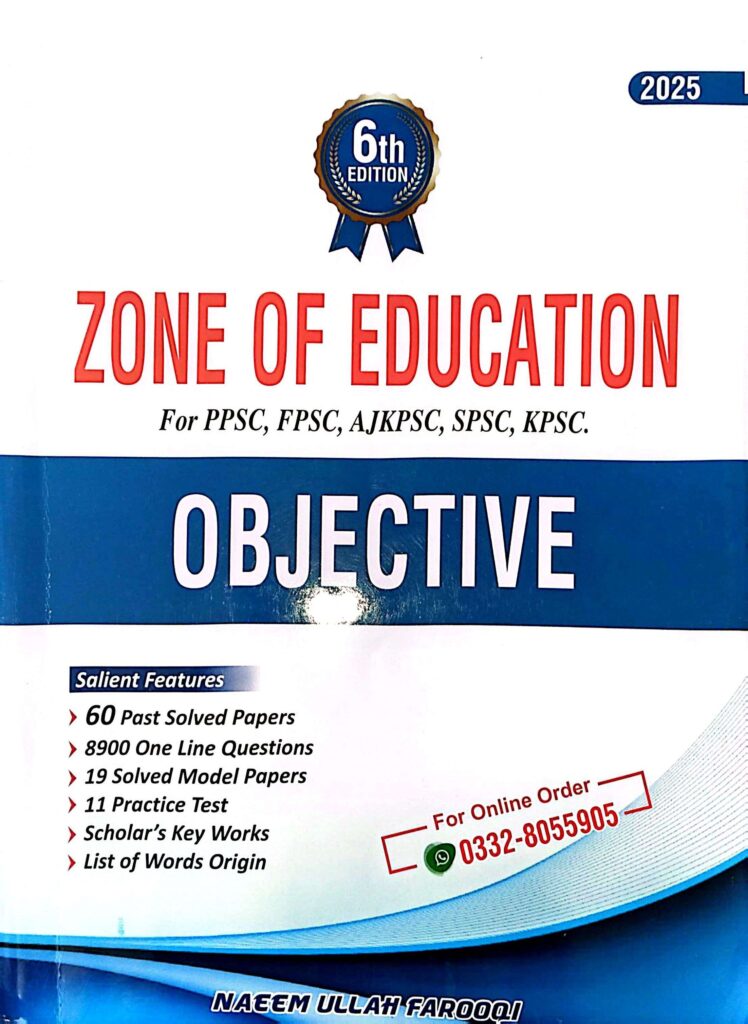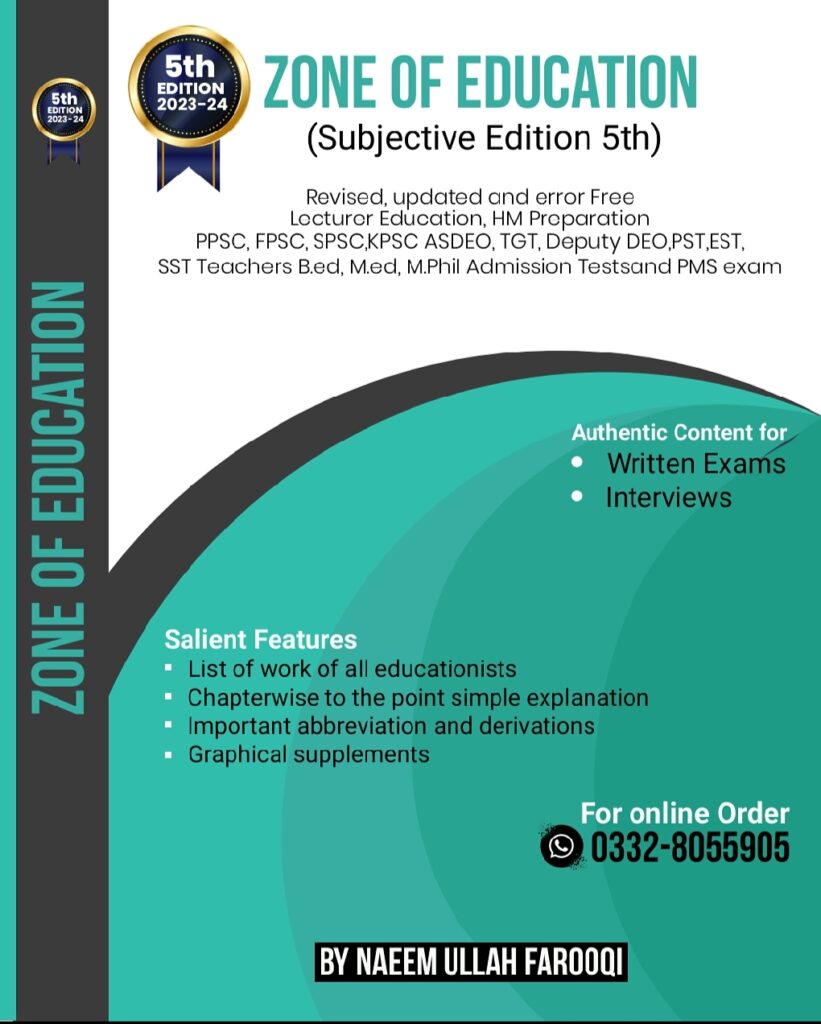Classroom Management
.1. What is a common technique for managing disruptive behavior without causing embarrassment to the student?
A) Publicly scolding the student
B) Calling the student’s parents during class
C) Using private signals or cues
D) Asking other students to discipline the student
Answer: C) Using private signals or cues
2. “Respect your classmates” is a principle of:
A) Administration
B) Direction
C) Both A & B
D) Classroom Management
Answer: D) Classroom Management
3. What is the purpose of a “time-out” in classroom discipline?
A) To give students extra time to complete their work
B) To remove a student from a situation to calm down and reflect
C) To reward good behavior
D) To encourage group discussions
Answer: B) To remove a student from a situation to calm down and reflect
4. Classroom management is the process of creating and maintaining a safe and productive:
A) Learning
B) Teaching
C) Both
D) None of these
Answer: A) Learning
5. Classroom management involves a variety of _______ and techniques that teachers use to promote positive behavior.
A) Strategies
B) Tactics
C) Both
D) None of these
Answer: A) Strategies
6. Classroom management engages students in learning and fosters a sense of community and mutual respect among:
A) Teachers
B) Staff
C) Students
D) All of these
Answer: C) Students
7. Establishing Rapport and Building Relationships is a principle of:
A) Classroom Management
B) Administration
C) Direction
D) All of these
Answer: A) Classroom Management
8. Having a Clear and Concise Behavior Policy is a principle of:
A) Administration
B) Classroom Management
C) Direction
D) All of these
Answer: B) Classroom Management
9. The Law of Effect can be effectively used in:
A) Accelerate learning
B) Curriculum development
C) Classroom Management
D) Teaching methods
Answer: C) Classroom Management
10. To make classroom teaching more effective, every teacher should:
A) Discuss with colleagues
B) Analyze the responses of students
C) Publish his/her writing
D) None
Answer: B) Analyze the responses of students
11. What is the primary goal of a “classroom meeting” in classroom management?
A) To assign grades to students
B) To promote student misbehavior
C) To provide a forum for students to discuss classroom issues and problem-solve together
D) To conduct standardized tests
Answer: C) To provide a forum for students to discuss classroom issues and problem-solve together
12. What is the term for a classroom management approach that encourages students to take responsibility for their own behavior and learning?
A) Behaviorism
B) Behavior modification
C) Student-centered classroom management
D) Authoritative classroom management
Answer: C) Student-centered classroom management
13. What is “classroom organization” in the context of classroom management?
A) The process of assigning seating arrangements
B) The arrangement of classroom furniture
C) The overall structure and flow of teaching and learning activities
D) Conducting standardized testing
Answer: C) The overall structure and flow of teaching and learning activities
14. Which classroom management approach involves a balance between clear rules and expectations and a nurturing and supportive classroom environment?
A) Behaviorism
B) Behavior modification
C) Authoritative classroom management
D) Permissive classroom management
Answer: C) Authoritative classroom management
15. What is the primary goal of using “proximity control” in classroom management?
A) To conduct standardized testing
B) To monitor student behavior from a distance
C) To physically move closer to students to manage their behavior
D) To assign grades to students
Answer: C) To physically move closer to students to manage their behavior
16. What is the term for a classroom management approach that allows students more freedom and autonomy in decision-making?
A) Authoritative classroom management
B) Permissive classroom management
C) Behavior modification
D) Behaviorism
Answer: B) Permissive classroom management
17. What is “classroom discipline” in the context of classroom management?
A) Punishing students for misbehavior
B) Establishing a positive classroom environment
C) The process of assigning grades to students
D) Maintaining order and control in the classroom
Answer: D) Maintaining order and control in the classroom
18. Which of the following is a key principle of effective classroom management?
A) Ignoring all student behavior
B) Reacting to student misbehavior without a plan
C) Promoting a positive classroom climate
D) Implementing a one-size-fits-all approach
Answer: C) Promoting a positive classroom climate
19. High and low achievers are sorted out by:
A) Reliability
B) Objectivity
C) Ease or difficulty
D) Discrimination power
Answer: D) Discrimination power
20. Which one is the major objective of School Discipline?
A) To ensure safety of staff and students
B) To create an environment conducive for teaching
C) Both A and B
D) None of These
Answer: C) Both A and B
1. Which is the Classroom Management Style?
A) Authoritarian
B) Permissive
C) Indulgent
D) All of These
Answer: D) All of These
2. The primary objective of the oversight of instruction should be the:
A) Advancement of pupil welfare
B) Proper utilization of school facilities
C) Carrying out of the curriculum
D) Achievement of success in examination
Answer: A) Advancement of pupil welfare
3. Effective classroom management primarily focuses on:
A) Controlling students
B) Enhancing student engagement
C) Implementing strict rules
D) Assigning more homework
Answer: B) Enhancing student engagement
4. The purpose of establishing classroom rules is to:
A) Demonstrate authority
B) Create a positive learning environment
C) Restrict students’ freedom
D) Promote competition
Answer: B) Create a positive learning environment
5. When addressing disruptive behavior, it is essential to:
A) Publicly reprimand the student
B) Understand the cause of the behavior
C) Ignore the behavior to avoid confrontation
D) Implement harsh punishments
Answer: B) Understand the cause of the behavior
6. Which of the following is a proactive classroom management strategy?
A) Reacting to misbehavior after it occurs
B) Establishing clear expectations and routines
C) Issuing warnings without explaining the reasons
D) Using punishment as the first response
Answer: B) Establishing clear expectations and routines
7. Building positive teacher-student relationships contributes to:
A) Increasing competition among students
B) Weakening classroom discipline
C) Enhancing student motivation and behavior
D) Encouraging strict rules and punishments
Answer: C) Enhancing student motivation and behavior
8. A key aspect of effective classroom management is:
A) Isolating students who misbehave
B) Flexibility in adapting to students’ needs
C) Implementing identical rules for all students
D) Punishing students frequently
Answer: B) Flexibility in adapting to students’ needs
9. Effective classroom management aims to:
A) Eliminate all conflicts and disagreements
B) Promote student responsibility and self-discipline
C) Discourage student participation and interaction
D) Favor certain students over others
Answer: B) Promote student responsibility and self-discipline
10. The purpose of using positive reinforcement in classroom management is to:
A) Avoid addressing misbehavior
B) Reward students for negative actions
C) Encourage desired behavior through rewards or praise
D) Discourage students from taking risks
Answer: C) Encourage desired behavior through rewards or praise
JOIN ZONE OF EDUCATIONPK!
Discover the most comprehensive and reliable pedagogy resources in Pakistan, curated for competitive exam success. Our content covers all competitive exam MCQs, including PPSC, FPSC, AJKPSC, SPSC, and more. Designed to empower learners with top-notch material and insights, trust us for your preparation journey!


